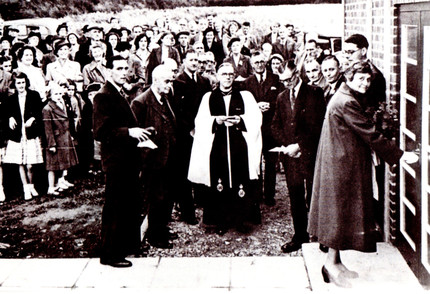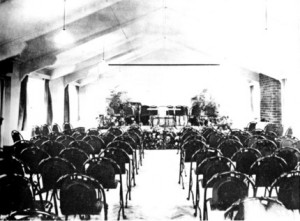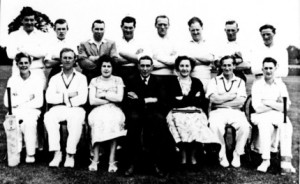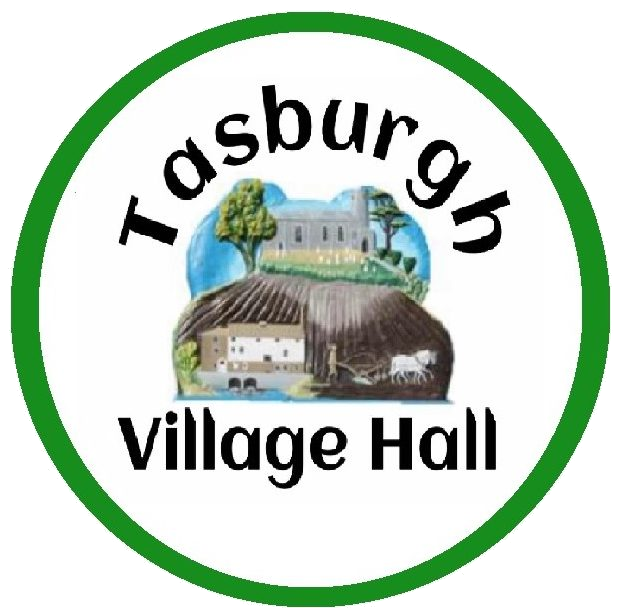The following is taken from “THE HISTORY OF TASBURGH” which was based on the writings of the late Syliva Addington in the Tasburgh Quarterly of the time and the Parish Council minutes of the day.
THE LATE 20th CENTURY
The village hail and playing field, memories and anecdotes, the village expands
In 1945 Tasburgh Women’s Institute was relaunched. The earliest surviving minutes are those of 1947 when Mrs Rosemary Hastings of Rainthorpe Hall was president, Mrs Larner, secretary and Mrs Mann, treasurer.
Meetings were held monthly at Rainthorpe Hall with talks, demonstrations, competitions, flower shows and whist drives. The quality of WI cooking was such that they were praised in the press on several occasions and in 1969 won a silver rose bowl for their preserves.
They formed a choir and helped the village in many ways, providing refreshments at fetes and plays, organising the poppy day collection and providing “meals on wheels.”
The WI also raised funds to pay for tables, chairs and other items at the village hall where a plaque acknowledges their efforts. For their own enjoyment they organized outings, to what were in those days such far away places as Clacton, Felixstowe and Woburn.
From the wartime salvage fund and from many money raising events including the saving of pennies by the schoolchildren £562 16s 8d had by May 1947 been raised for a village hall.
For a small relatively poor village this was a most creditable amount since it was worth about £16,000 at today’s money values
A leading light in the efforts to provide a hall was Mr. K. Riches, chairman of the village ball committee. In 1949 a public meeting was called to discuss proposals for a hail, one being to rent a building. A breakthrough came the next year with the public spirited offer of the gift of two fields covering about four acres by John Everson of Old Hall Farm and his sons Russell and George. Thus the village gained both a playing field and a site for the village hail midway between Upper and Lower Tasburgh.
The first village hail committee represented the major organisations in the village at the time and comprised: Mr. B. W. Cross, Parish Council; Mrs. H. M. Mann, Women’s Institute; Rev R. Maudsley, Parochial Church Council; – Mr. R. G. Clarke, Methodist Church; Mr. J. Cadman, Tasburgh United Football Club; Mrs. C. F. Cross, School Manager.

The hall was opened on 8th September 1953 by Mrs. Rosemary Hastings. The original building was sixty by twenty-four feet with two small rooms at the rear intended as a kitchen and a committee room.

After the Second World War, Tasburgh Football Club played on a tiny sloping pitch in Rainthorpe Park, close to the Newton Flotman-Flordon Road.
They were not popular with visiting teams since the pitch was riddled with molehills and rabbit holes. By 1952 the football team had moved to the new playing field but in their keenness to leave behind the obstacles of their old field they failed to observe that the playing field was littered with sharp flints.
Despite compulsory flint picking sessions for players and officials before every match, players received many nasty cuts and the club was forced to move yet again.
This time they played on a field off Old Hall Farm Loke where the changing facility comprised an eight by six feet steel wartime air raid shelter.
An entry in the Eastern Daily Press of 28th August 1953 records the Annual General Meeting of Tasburgh United Football Club where it was decided to form a combined football and cricket club under the title of Tasburgh United Sports Club. The chairman was Mr. K. Riches and the secretary Mr. J. Cadman.
In the meanwhile local youths had developed another form of sport. On the land where Harvey Close now stands a cycle speedway track was developed and the team racing there in the Depwade League had the proud name of the Tasburgh Tigers.

By 1954 the football pitch at the playing field had been re-laid together with a cricket pitch and practice wicket.
The village cricket team played on Saturdays and Sundays for some ten years. In this period football flourished, with three teams and many supporters; it was not unknown for three coaches to be required to convey the first team and supporters to away matches.
In the 1956/57 season Tasburgh led the Norwich and District League.
Sadly within the next twenty years the football team faded then disbanded.
In 1961 the population of Tasburgh was 343, slightly less than the 1911 figure of 355. While some old cottages had been demolished and council houses had appeared on Grove Lane, Church Road and Ipswich Road the village remained completely rural in character. This changed dramatically after 1961 as widespread house building, mostly in Upper Tasburgh, led to a trebling of the population to reach 1117 in 1991.
The needs of the growing village led to the formation of the Playgroup by Christine Morris and Jenny Harvey in 1968 with meetings twice weekly at the village hall. By this date other organizations had arisen in addition to the WI and Football Club; Tasburgh Players had established themselves at the theatre in Rainthorpe Hall, there was a Church Youth Club, Christian Alliance children’s club, a Bingo Club and WI Whist Drives. A particularly lively club was the Women’s’ Association with fortnightly meetings, outings and parties. Among their highly varied activities was a midsummer ball, also a barbeque and swim by the River Tas at Saxlingham Thorpe. Two major annual events throughout the 60’s and 70’s were the church fete at Rainthorpe Hall and the village fete at the playing field.

